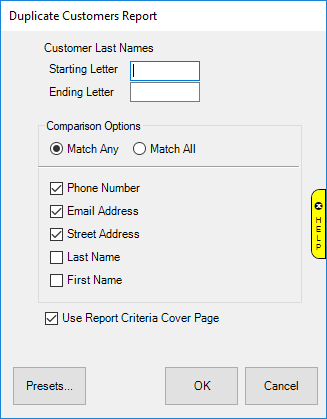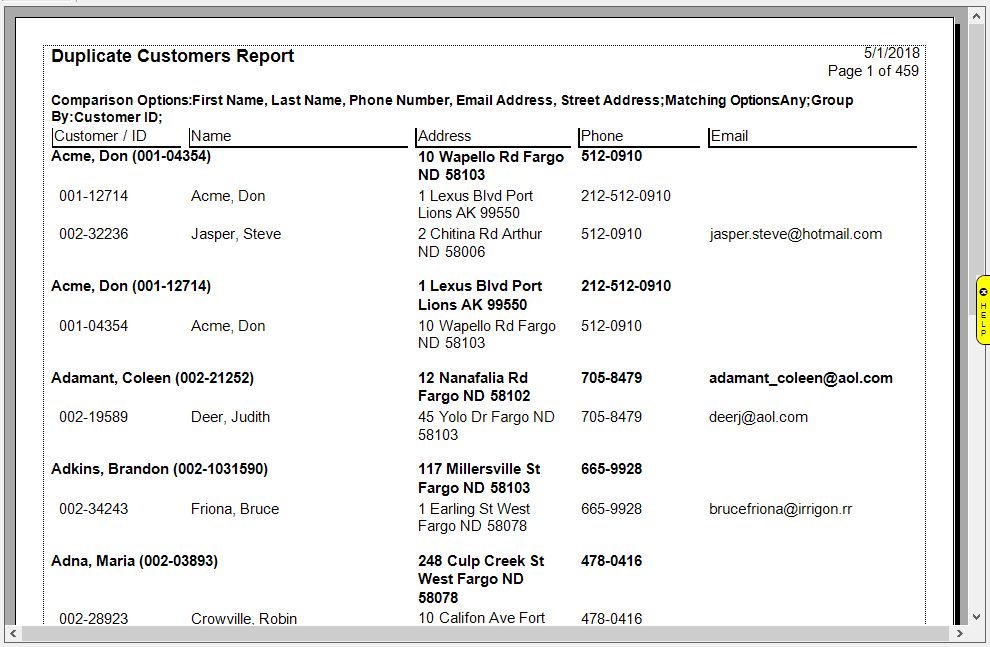
The Duplicate Customers report is designed to identify potential duplicate customer records. It is a good starting point when looking to clean up your customer database.
To run the report:
1.
Click Reports ►
Customers ►
Duplicate Customers.
2. Use the Starting and Ending Letter fields to limit the report to a range of customers based on last name. Leaving these blank will check the entire customer base for duplicates. Depending on the number of customers and duplicates, this could take a very long time. Also, the resulting report may be very long. If that is the case make a plan to make this more manageable by attacking it a few letters at a time.
3. The Comparison Options radio button works in conjunction with the checkboxes below it to control how the report searches for potential duplicates:
|
Match Any |
Display customer records as potential duplicates if any of the criteria checked below matches.
|
|
Match All |
Display customer
records as potential duplicates only if ALL of the checked criteria
matches (i.e. exact match). |
4.
Select your criteria and click OK to generate the report.
5. Each customer will be listed in bold with potential duplicates showing beneath them.
Working with the Duplicate Customer report:
•The report is interactive. You can click on the customer’s number or name to open the customer record. From there you can use the Supervisor menu to merge duplicates. Note that the report does NOT refresh, so it is up to you to keep track of where you left off.
•Depending on criteria selected, this report may not match exactly to the results shown when using the Merge utility from the customer record.
•Remember that you can use the report filter to limit this report by last name letter. This can help make the process more manageable if you find the report is too long.
•Because it is showing duplicates, you will see the same customer more than once. In the screenshot above note that customer Don Acme (001-04354) has Don Acme (001-12714) as a potential duplicate, and below that they appear again in reverse order.